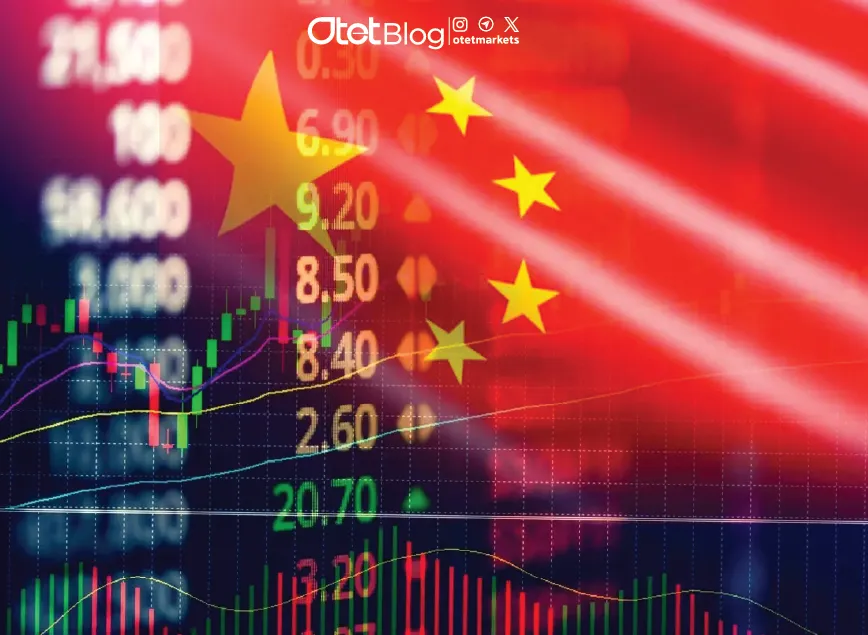
China’s Role in Global Markets: What to Expect in the Next Decade
Estimated reading time: 6 minutes
Table of contents
- China’s Economic Position Today: A Global Powerhouse
- The Future: China’s Expanding Influence
- China’s Evolution in the Global Supply Chain
- Impact on Energy and Raw Materials Markets
- The Technological Renaissance in China
- China’s Growing Influence in Global Financial Markets
- Challenges Ahead for China
- Investment Opportunities Linked to China
- Conclusion: China’s Unstoppable Economic Growth
Over the past few decades, China has evolved from a manufacturing powerhouse to a key driver of the global economy. As the world’s second-largest economy, China holds significant sway in industries like manufacturing, technology, exports, and energy. Looking ahead, China’s influence on global markets is set to expand even further, with the next decade promising even greater shifts in the global economic landscape. In this blog post, we’ll explore the areas where China’s impact is most pronounced, the opportunities this creates, and the challenges the country will need to navigate.
China’s Economic Position Today: A Global Powerhouse
With a population of over 1.4 billion, China’s economy is vast and diverse. Here are some key aspects of China’s economic influence:
1. A Global Production Leader
China commands a substantial share of global production. Its manufacturing sector is integral to many industries worldwide, making it a dominant force in global supply chains.
2. The World’s Largest Exporter
Not only is China the largest producer, but it is also the world’s largest exporter, moving goods across the globe. This export strength plays a pivotal role in its economic influence.
3. The Second-Largest Importer
After the U.S., China is the world’s second-largest importer of goods. This status helps it exert considerable influence over global trade dynamics.
4. A Growing Consumer Market
China’s burgeoning middle class is transforming the country into one of the most attractive domestic markets for international brands. This growing consumer base makes it a significant player in global demand.
Read More: DeepSeek: The Rise of China’s AI Revolution and Global Tech
The Future: China’s Expanding Influence
In the next decade, China will solidify its leadership across various industries, with several key areas poised for significant growth. China is positioning itself to lead in areas like artificial intelligence, electric vehicles, and digital infrastructure. The country’s investments in these sectors are set to reshape the global technological landscape.
China is already a leader in renewable energy production, including solar panels and lithium batteries. The country’s role in energy markets will continue to grow, with its policies impacting both global energy prices and the renewable sector.
China’s Evolution in the Global Supply Chain
For years, China has been known as the “world’s factory,” but its role has evolved beyond just manufacturing. Now, China plays a central role in managing and leading global supply chains.
Chinese companies are moving into the production of more complex, high-tech goods, making the country an essential player in industries like electronics, automotive, and renewable energy.
China’s Belt and Road Initiative (BRI) is a key part of its strategy to expand its economic footprint globally. By investing in infrastructure and trade routes, China is increasing its economic influence and securing access to vital markets.
Even as some production lines shift to other countries, many critical components, raw materials, and technologies are still produced or managed in China. This position solidifies its central role in the global supply chain.
Impact on Energy and Raw Materials Markets
China is the world’s largest importer of energy resources and a critical player in the global raw materials markets. This dominance has a profound impact on pricing and availability worldwide.
Energy Imports
China imports large volumes of crude oil and natural gas to meet its industrial needs, making its energy demand a key factor in global markets.
Leading Renewable Energy Production
China is the largest producer of renewable energy equipment, such as solar panels and lithium-ion batteries, driving both the global energy transition and the demand for raw materials.
Rare Earth Metals
China holds a commanding position in the market for rare and strategic metals like lithium, nickel, and copper. These materials are essential for various industries, including tech and energy, giving China significant leverage in global markets.
The Technological Renaissance in China
China’s focus on technological advancement has led to impressive strides in multiple sectors. Companies like Huawei, Alibaba, Tencent, and BYD are pushing the envelope in areas like artificial intelligence, electric vehicles, and digital finance.
China’s digital economy is booming, with QR code payments, digital wallets, and the central bank’s digital currency (e-CNY) becoming increasingly prevalent. These developments signal China’s ambition to dominate in the digital financial space.
The Chinese government is actively working to decrease its dependence on foreign technologies, focusing on growing domestic capabilities. This move could further strengthen China’s position in global markets.
Read MOre: The Global Market Impact of Chinese New Year
China’s Growing Influence in Global Financial Markets
China’s role in global financial markets is set to expand over the next decade. Here’s how:
1. Attracting Foreign Investment
China’s stock markets are becoming more accessible to foreign investors, with the country drawing significant capital from around the world.
2. Chinese Government Bonds
Chinese government bonds are emerging as a viable option for central banks and institutional investors looking to diversify their portfolios.
3. The Rise of the Yuan
The Chinese yuan (CNY) is steadily becoming a more widely recognized global currency, with international trade increasingly conducted in yuan. The digital yuan (e-CNY) could also play a role in international transactions, challenging the dominance of the U.S. dollar.
Challenges Ahead for China
Despite its many strengths, China faces a range of challenges that could affect its future growth.
Geopolitical Tensions
Ongoing geopolitical tensions, particularly with the U.S., Taiwan, and Europe, could create roadblocks for China’s growth and global influence.
Domestic Policies and Tech Regulations
China’s strict government oversight of technology firms and foreign investments has raised concerns among some international investors, potentially affecting future capital inflows.
Aging Population
China’s demographic shift—marked by a declining birth rate and an aging population—could have long-term economic implications, slowing growth and affecting the labor market.
Environmental Concerns
Environmental challenges, including climate change, are growing concerns for China, which will need to balance economic growth with sustainable development.
Investment Opportunities Linked to China
For global investors, China presents numerous opportunities across different sectors. Here are a few to consider:
Chinese ETFs and Stocks
Investing in Chinese companies and ETFs allows exposure to China’s rapidly growing industries, from technology to renewable energy. Tracking the global supply chain and identifying companies benefiting from China’s growth could provide valuable investment insights.
China’s demand for energy and raw materials makes it a key player in the commodities markets. Understanding these dynamics can help investors make informed decisions. Staying on top of China’s currency and monetary policies is crucial for forex market traders, as the yuan continues to gain prominence.
Conclusion: China’s Unstoppable Economic Growth
Looking ahead, China is poised to remain a dominant force in the global economy. The country’s influence spans manufacturing, exports, technology, energy, financial markets, and geopolitics. Investors and analysts alike must pay close attention to China’s policies and market movements to make informed decisions in the coming decade. Ignoring China’s growing role would be a missed opportunity in understanding and navigating the global economic landscape.
Share
Hot topics

Federal Reserve’s Challenges to Trump’s New Policies
As the Federal Reserve Open Market Committee (FOMC) prepares for its upcoming meeting, all eyes are on how the Fed will respond to Donald Trump’s latest economic policies. With the...
Read more




Submit comment
Your email address will not be published. Required fields are marked *